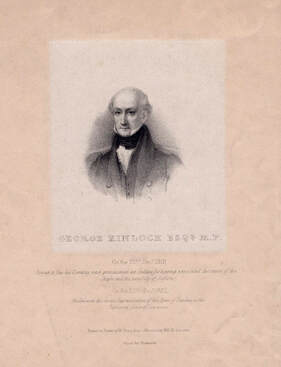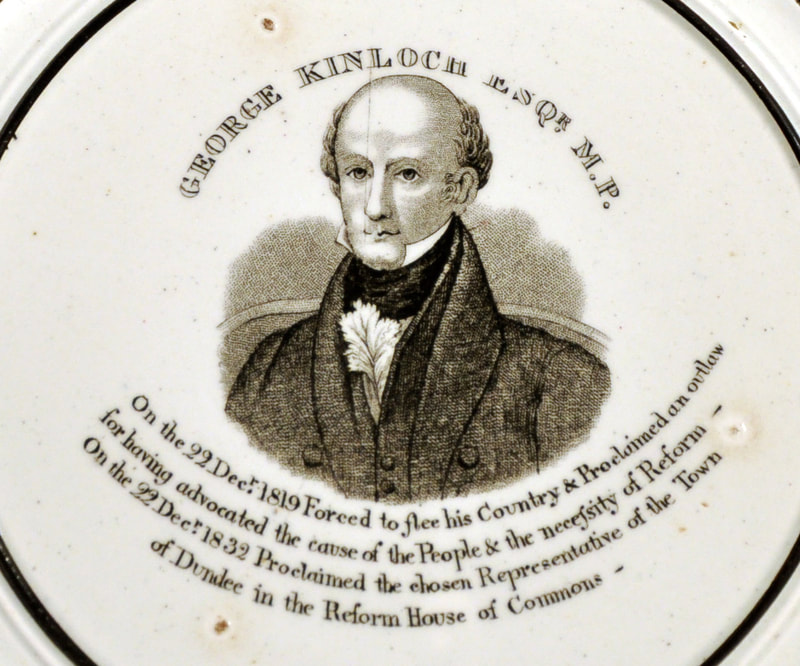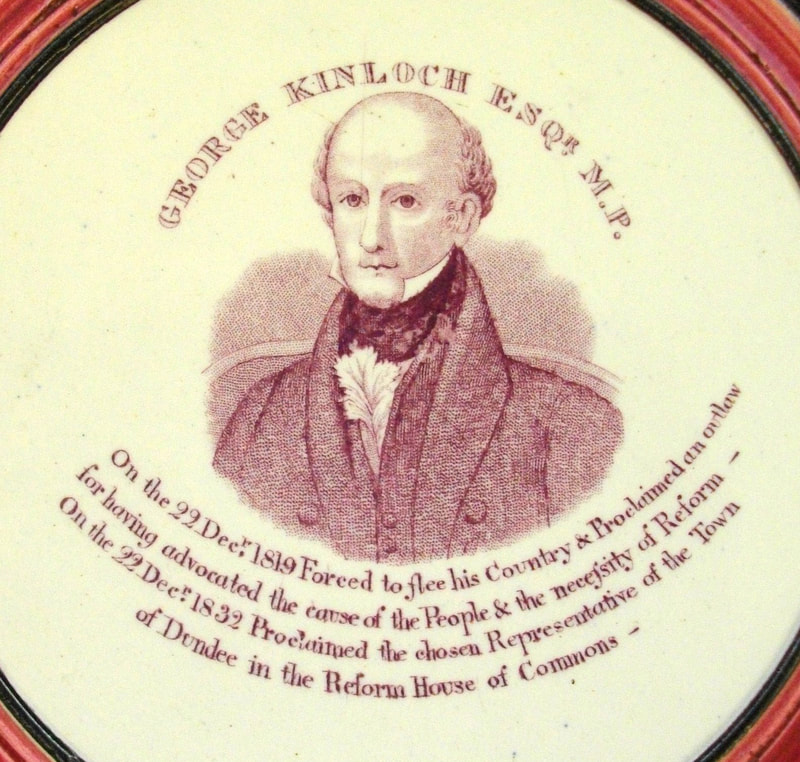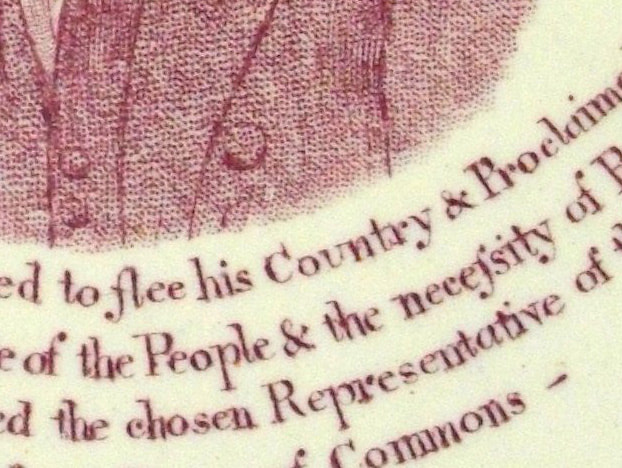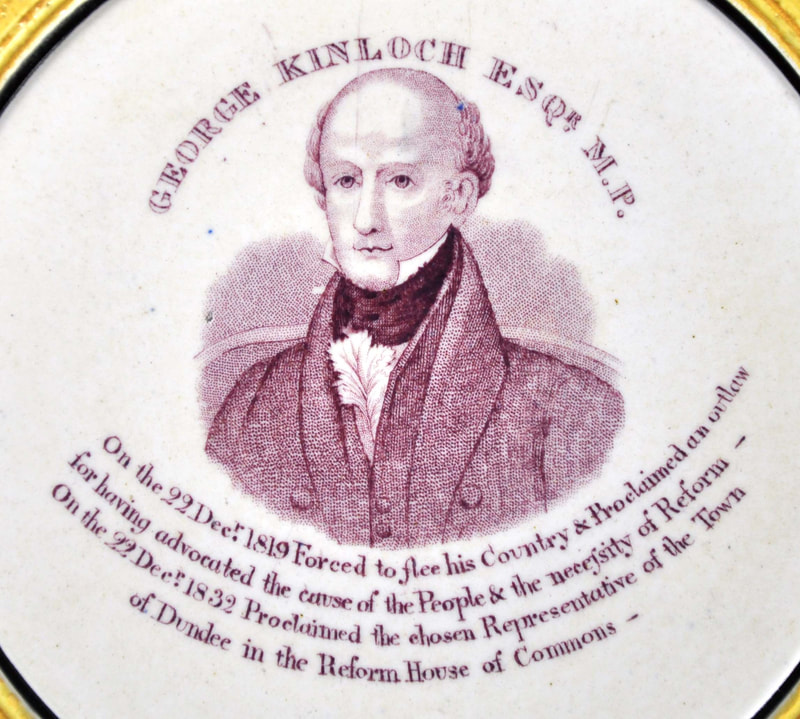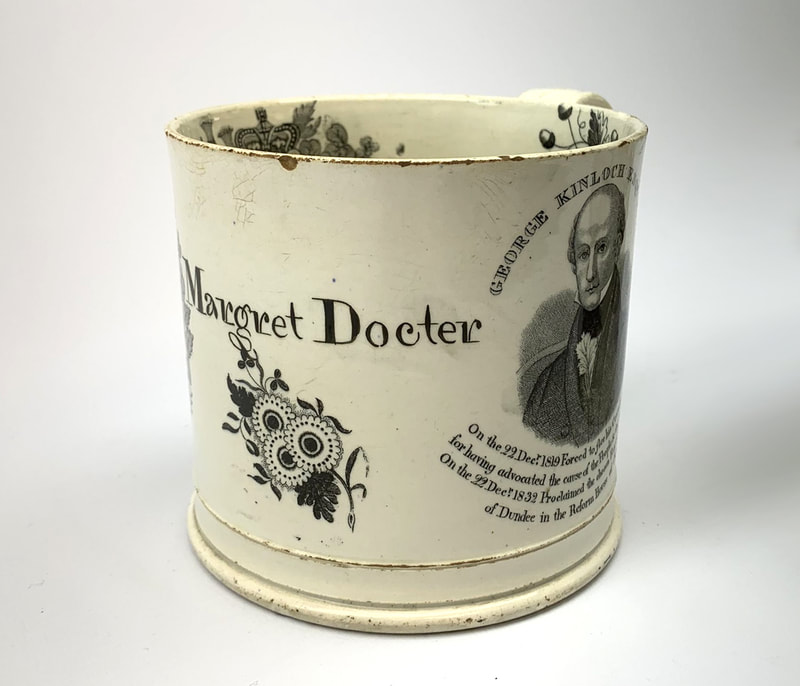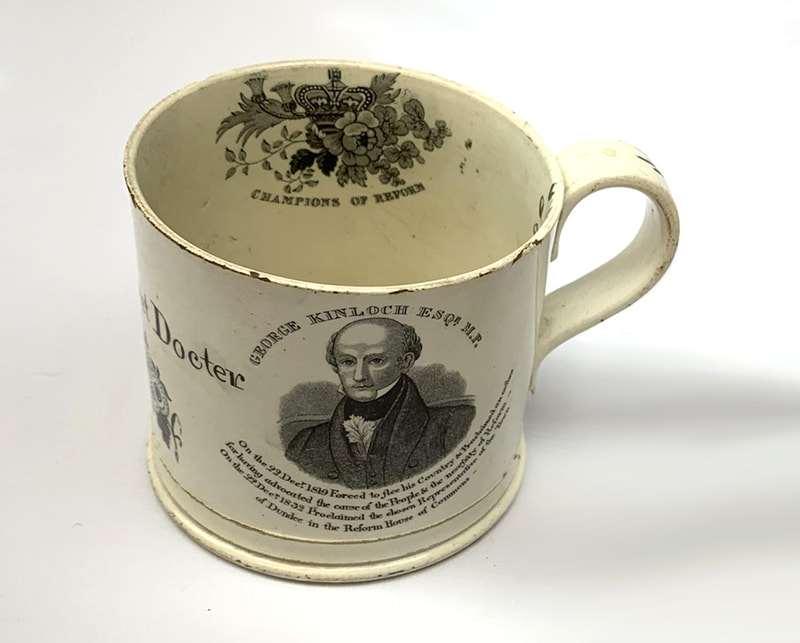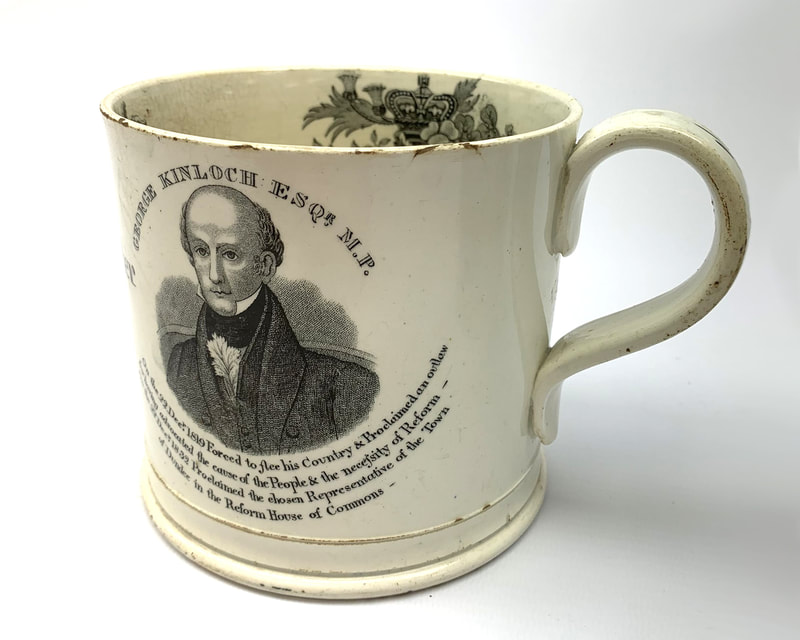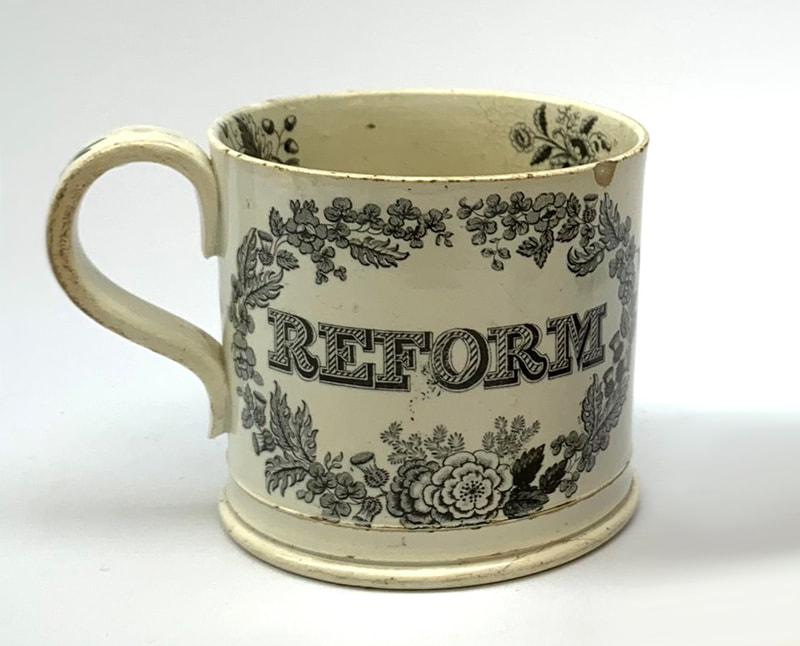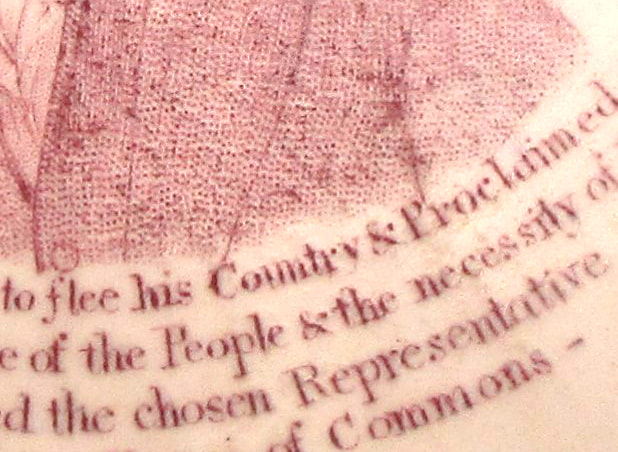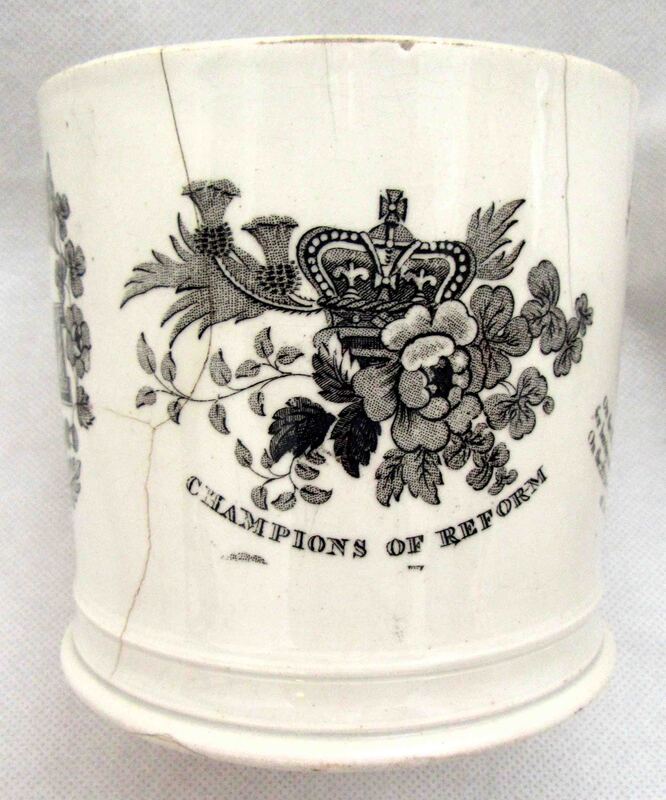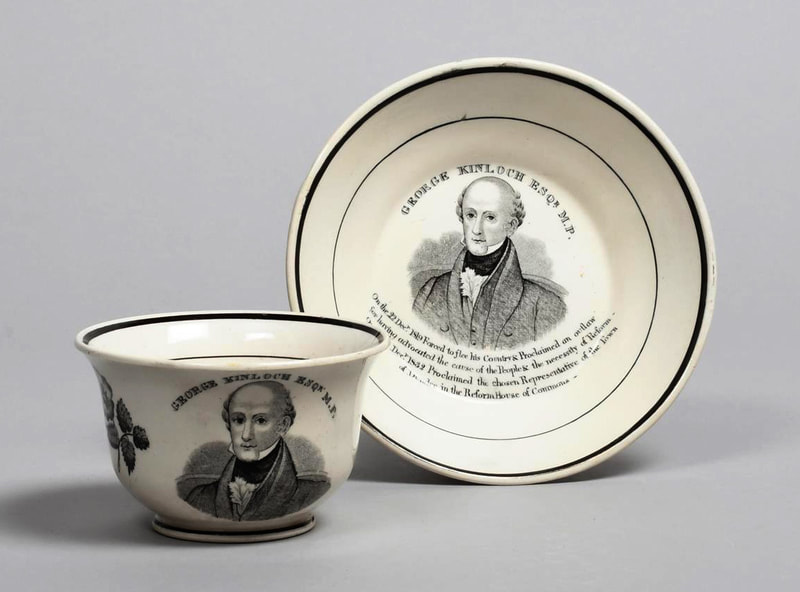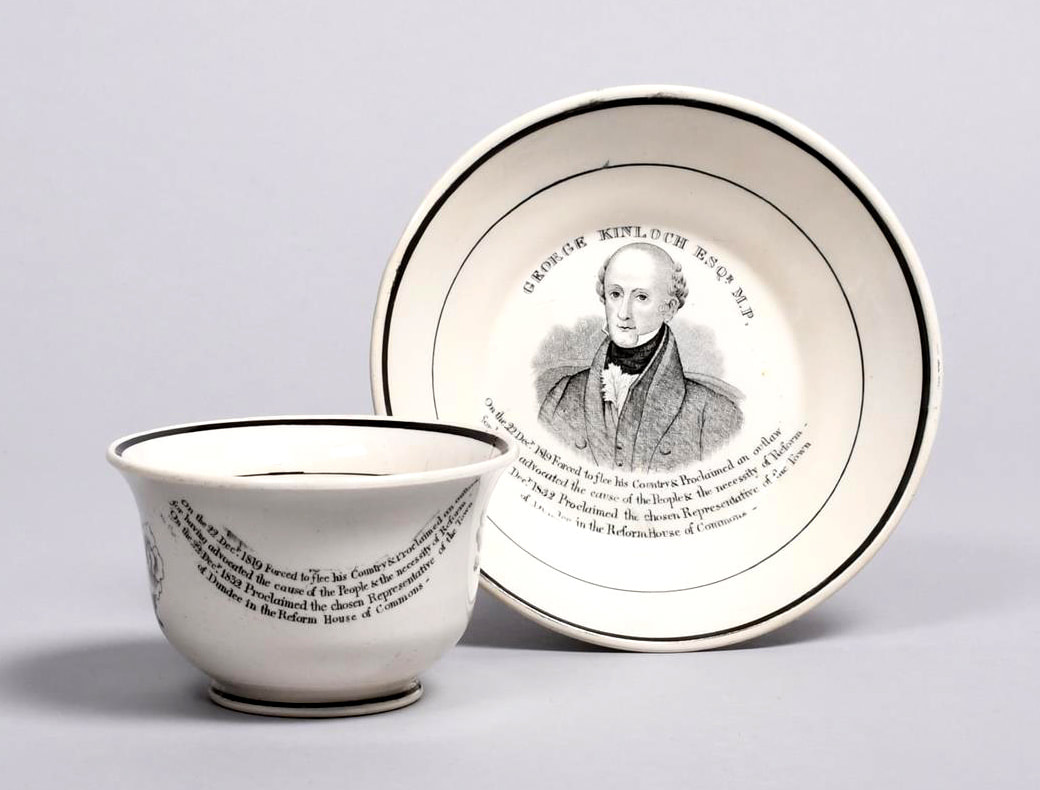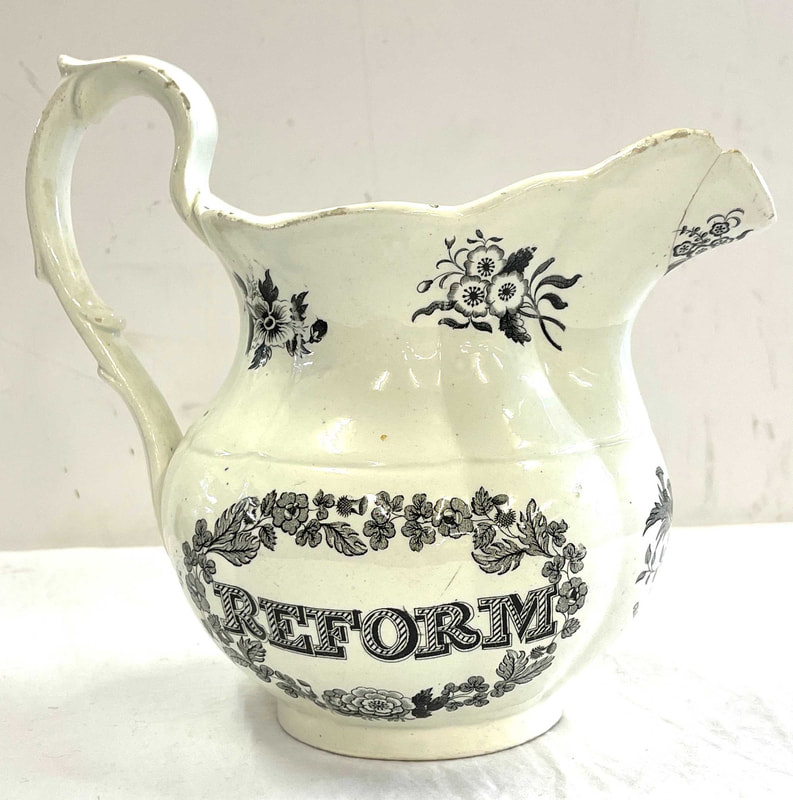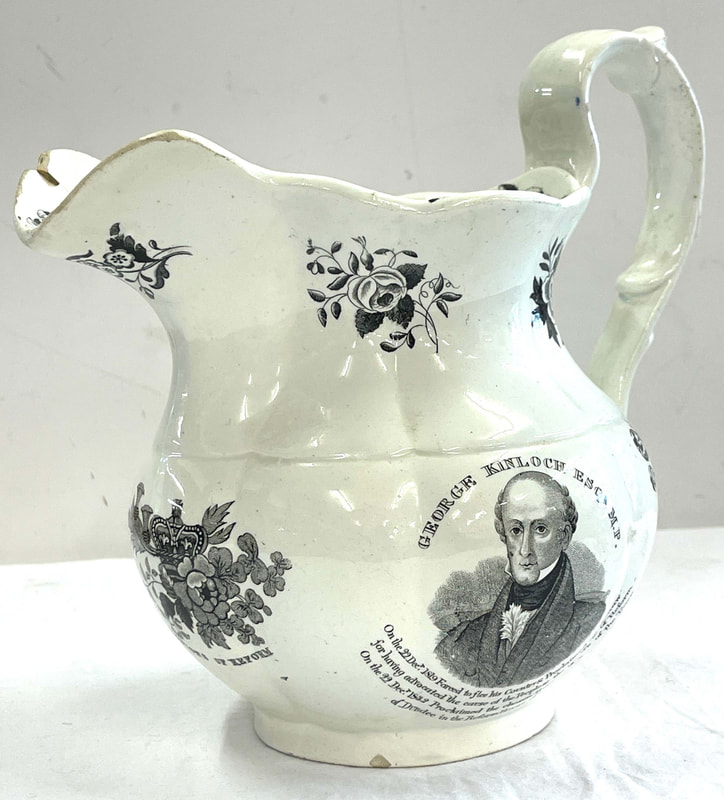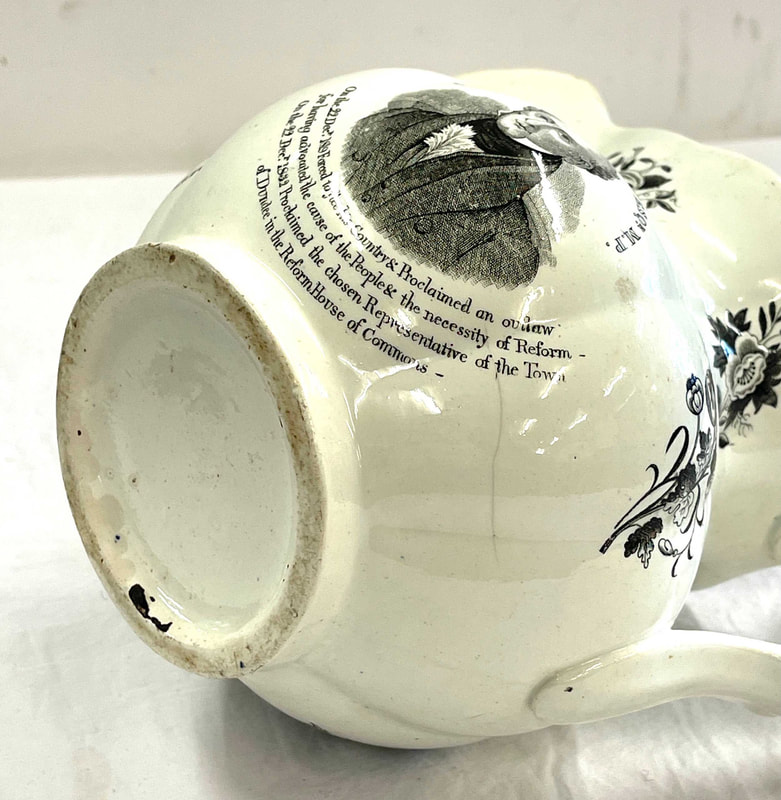George Kinloch Esq MP – 1775–1873
|
To the right, an engraving of George Kinloch by William Sharp, printed by Charles Joseph Hullmandel, after Miss M. Saunders, lithograph, 1832 or after. George Kinloch, known as the 'radical laird', chaired a meeting in protest of the Peterloo massacre in 1819. Two weeks later, he was arrested for sedition. The likely sanction would have been deportation to Australia, so while on bail, Kinloch fled the UK, living in exile in France from 1820–1821. In 1823 he secretly returned to Scotland and was pardoned. He was elected MP for the new constituency of Dundee in 1832, but died a year later from a chill. |
On the 22 Dec. 1819 Forced to flee his Country & Proclaimed an outlaw
for having advocated the cause of the People & the necessity of Reform –
On the 22 Dec, 1832 Proclaimed the chosen Representative of the Town
of Dundee in the Reform House of Commons –
for having advocated the cause of the People & the necessity of Reform –
On the 22 Dec, 1832 Proclaimed the chosen Representative of the Town
of Dundee in the Reform House of Commons –
Attributed to Turpin & Co, Ouseburn Pottery or Bensham Pottery – George Kinloch, long 's'
Read more about this attribution here. The first plaque has an impressed letter 'B', perhaps to indicate the Bensham Pottery in Gateshead. Read more here. The items in this section are easily distinguishable from those below because they have an old-fashioned long 's' (that looks like an 'f') in the word 'necessity'.
There's a scratch running through the '9' in '1819' that shows this mug comes from the same transfer plate as the plaques above. This is of great interest because, more usually, these floral 'REFORM' mugs are associated with Chesworth & Robinson / Chetham & Robinson in Staffordshire, and marked 'C&R'.
Attributed to Turpin & Co, Ouseburn Pottery or Bensham Pottery – George Kinloch, short 's'
In this version, there is a short 's' in the word necessity. Note also that the portrait is cropped so that only one coat button appears above the text.
Tentatively attributed to Thomas Fell, St Peter's Pottery, Newcastle
The tea bowl and saucer below has a third version of the transfer with a short 's' in necessity, but a longer portrait, showing 4 buttons.
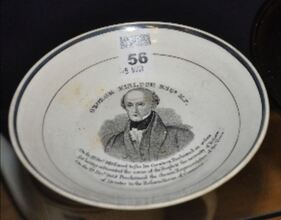 Photo Shapes Auctioneers & Valuers
Photo Shapes Auctioneers & Valuers
The saucer to the right gives a tantalising hint to the origin of the transfer, which has the longer portrait with 4 buttons and short 's'. The auction catalogue lists it as having an 'incised anchor mark to the base'. Thomas Fell is known to have used an impressed anchor mark.
It would be significant if we could nail this attribution down to Fell, as unmarked jugs like the one below are generally assumed to have come from Staffordshire.
